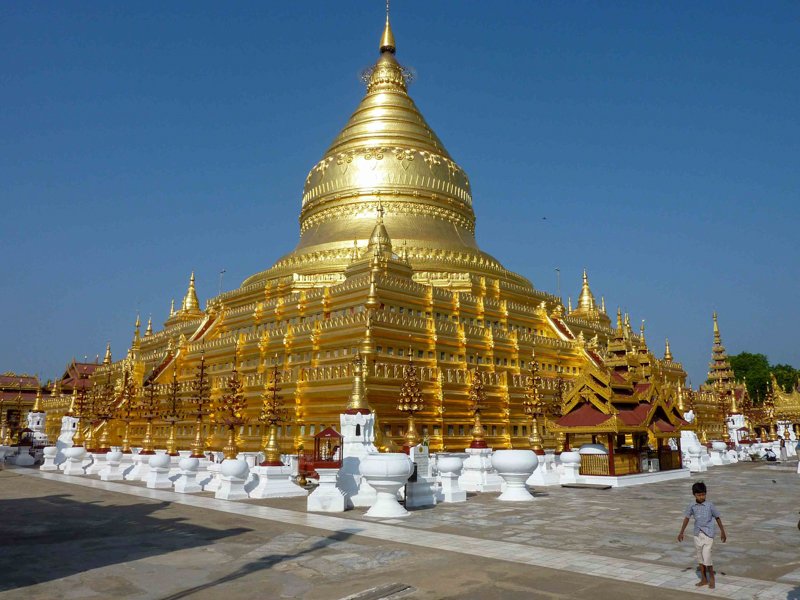Shwezigon
Location: Nyaung U – western sector close to river bank.
Year Built: Another early temple, it was started in the reign of Anawratha before 1084 when Kyanzittha usurped the throne. Anawratha’s other large temple is Shwesandaw.
Builder: Anawrahta built the lower terraces and Kyanzittha built the superstructure completing the building. This cannot be confirmed, however.
Architectural details: Very large stupa with three accessible terraces. There are 4 satellite temples with 1 bronze image of a standing Buddha measuring 3.9 to 4 m. (13 ft.) In each of them. The western Buddha is the original one and according to one guidebook, the most beautiful. They are from the Gupta school of art.
Construction: Stone masonry and sandstone blocks from the base to the top. The masonry joints are close together with hardly any space bonded with lime mortar with milk for better bondage than water.
Renovations: This stupa is regularly maintained. The 1975 earthquake damages the top of the dome and spire. It was repaired by the Construction Corps in 1975-78. In 1983 the dome was gilded.
Current Use and Highlights: Shwezigon is an important pilgrimage site and it’s also used for daily worship because the nat shrines are major religious attractions. It is considered one of Myanmar’s most revered shrines. There are modern nat shrines, the four large gilded Buddha images and jataka tiles. It is ranked equally with the Ananda as a pilgrimage site.
References:
Ancient Pagan: Buddhist Plain of Merit, Donald Stadtner, River Books, 2013
Pagan: Art and Architecture of Old Burma, Paul Strachan, Kiscadale Publications, 1989
Guide to Bagan Monuments by Min Bu Aung Kyaing, U Zaw Min Aye (Zaw Press), 2007
Inventory Of Monuments In Bagan, Pierre Pichard, UNESCO, 8 volumes, 1992-2001
